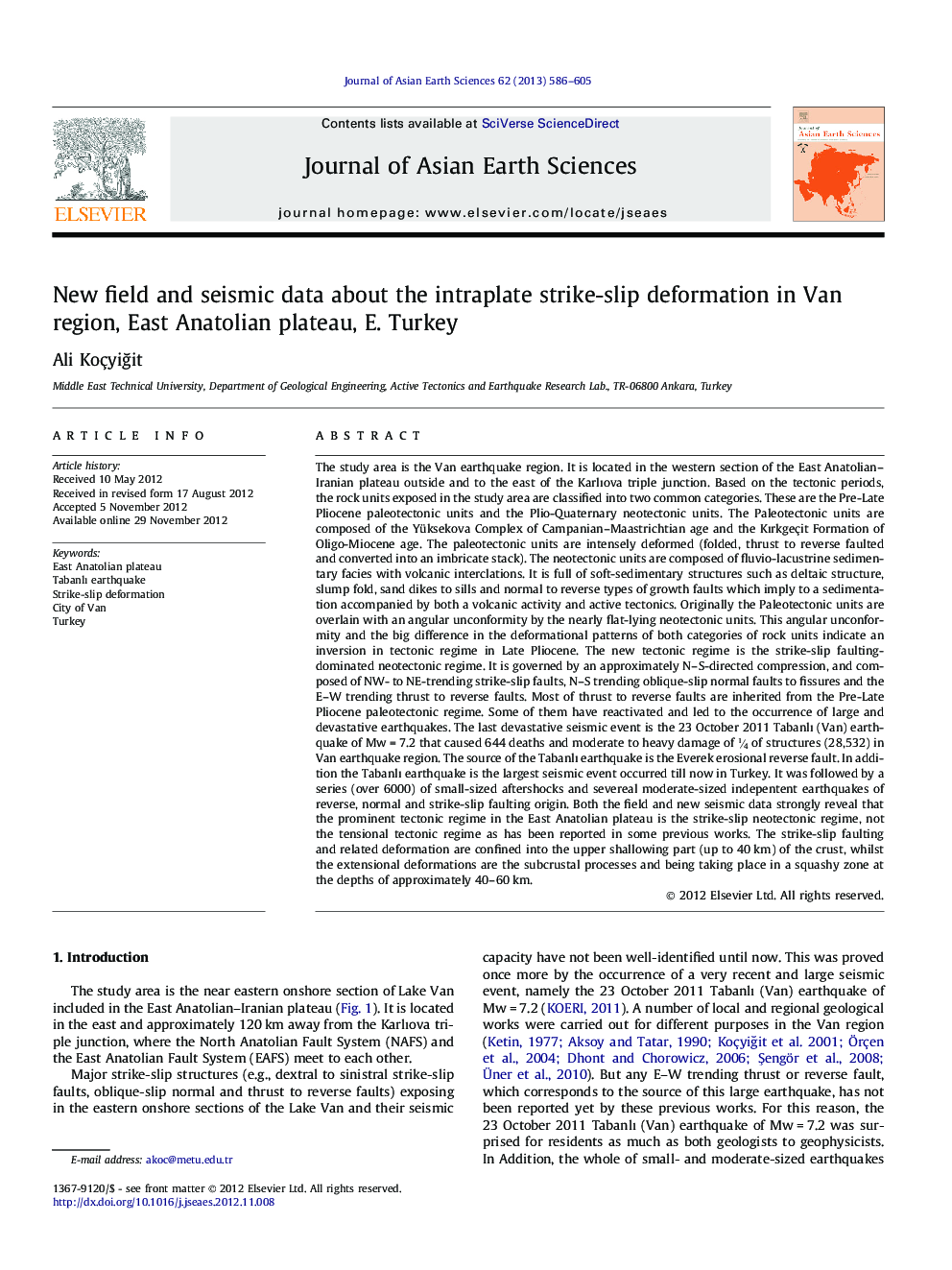| کد مقاله | کد نشریه | سال انتشار | مقاله انگلیسی | نسخه تمام متن |
|---|---|---|---|---|
| 4731300 | 1640403 | 2013 | 20 صفحه PDF | دانلود رایگان |

The study area is the Van earthquake region. It is located in the western section of the East Anatolian–Iranian plateau outside and to the east of the Karlıova triple junction. Based on the tectonic periods, the rock units exposed in the study area are classified into two common categories. These are the Pre-Late Pliocene paleotectonic units and the Plio-Quaternary neotectonic units. The Paleotectonic units are composed of the Yüksekova Complex of Campanian–Maastrichtian age and the Kırkgeçit Formation of Oligo-Miocene age. The paleotectonic units are intensely deformed (folded, thrust to reverse faulted and converted into an imbricate stack). The neotectonic units are composed of fluvio-lacustrine sedimentary facies with volcanic interclations. It is full of soft-sedimentary structures such as deltaic structure, slump fold, sand dikes to sills and normal to reverse types of growth faults which imply to a sedimentation accompanied by both a volcanic activity and active tectonics. Originally the Paleotectonic units are overlain with an angular unconformity by the nearly flat-lying neotectonic units. This angular unconformity and the big difference in the deformational patterns of both categories of rock units indicate an inversion in tectonic regime in Late Pliocene. The new tectonic regime is the strike-slip faulting-dominated neotectonic regime. It is governed by an approximately N–S-directed compression, and composed of NW- to NE-trending strike-slip faults, N–S trending oblique-slip normal faults to fissures and the E–W trending thrust to reverse faults. Most of thrust to reverse faults are inherited from the Pre-Late Pliocene paleotectonic regime. Some of them have reactivated and led to the occurrence of large and devastative earthquakes. The last devastative seismic event is the 23 October 2011 Tabanlı (Van) earthquake of Mw = 7.2 that caused 644 deaths and moderate to heavy damage of ¼ of structures (28,532) in Van earthquake region. The source of the Tabanlı earthquake is the Everek erosional reverse fault. In addition the Tabanlı earthquake is the largest seismic event occurred till now in Turkey. It was followed by a series (over 6000) of small-sized aftershocks and severeal moderate-sized indepentent earthquakes of reverse, normal and strike-slip faulting origin. Both the field and new seismic data strongly reveal that the prominent tectonic regime in the East Anatolian plateau is the strike-slip neotectonic regime, not the tensional tectonic regime as has been reported in some previous works. The strike-slip faulting and related deformation are confined into the upper shallowing part (up to 40 km) of the crust, whilst the extensional deformations are the subcrustal processes and being taking place in a squashy zone at the depths of approximately 40–60 km.
► The study area is the western section of Eastern Anatolian–Iranian plateau.
► It is characterized by strike-slip regime and related intracontinental deformation.
► The Van earthquake of Mw = 7.2 is the largest event of reverse faulting origin.
Journal: Journal of Asian Earth Sciences - Volume 62, 30 January 2013, Pages 586–605